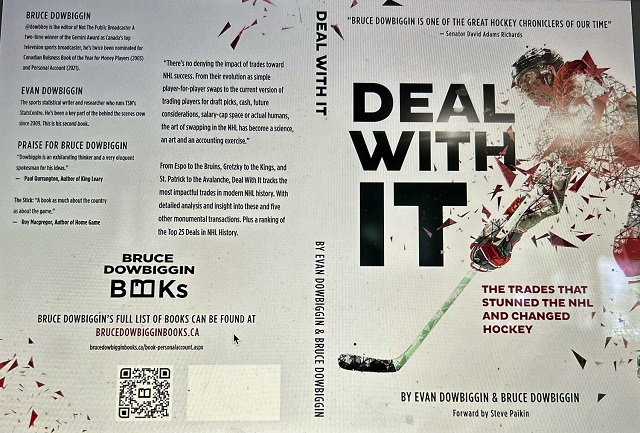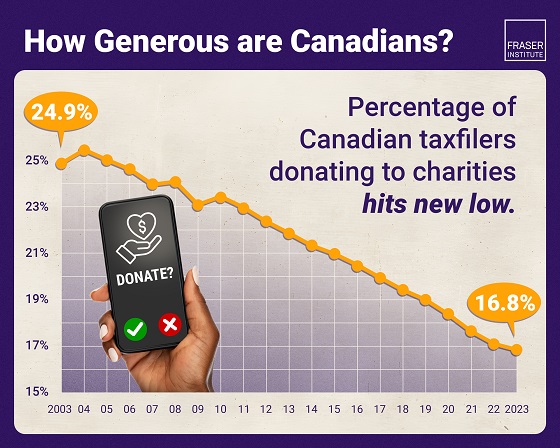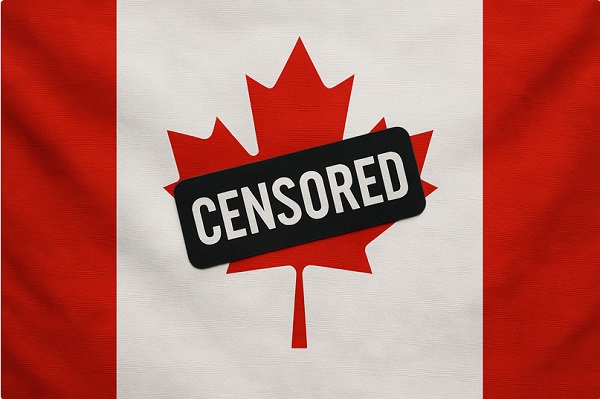Bruce Dowbiggin
Deal With It: When St. Patrick Talked His Way Out Of Montreal

Coming soon, our latest book “Deal With It: The Trades That Stunned The NHL And Changed Hockey”. With my son Evan, we look back to Espo to the Bruins (1967), Gretzky to the Kings (1988) , and St. Patrick to the Avalanche (1995), Deal With It tracks the back story behind the most impactful trades in modern NHL history. With detailed analysis and keen insight into these and five other monumental transactions, Deal With It recalls the moments when history was changed. Plus a ranking of the Top 25 Deals in NHL History.
One of the most memorable occurred 24 years ago, on December 6, 1995: Patrick Roy and Mike Keane from the Montreal Canadiens to the Colorado Avalanche for Jocelyn Thibault, Martin Rucinsky and Andrei Kovalenko. Trading, arguably, the greatest goalie the Canadiens history was the culmination of organizational dysfunction from which it has yet to recover. It begins with the hiring of former Habs Mario Tremblay and Rejean Houle when the Canadiens stumbled entering the 1994-1995 season. It started off well. Then on a November night in Montreal…
“With the team cooling off from their torrid start under (Mario) Tremblay, the Habs were at home for a Saturday night affair hosting a powerful Red Wings team on its way to breaking the NHL single-season wins record set by the 1976-77 Montreal team (62 to that club’s 60). With the closing of the Forum, the arena Roy had once dominated, Patrick’s dominance had become less-than-surefire. (He came in that night at 238-80-34 all-time at the Forum.) All that rich history didn’t help Roy that particular night and before a national TV audience the wheels came off for hundreds of thousands to witness.
Earlier in the day, Roy had had an impromptu breakfast at Moe’s Diner in Montreal with Detroit goalie Mike Vernon, who’d himself been forced out of Calgary after winning a Cup. Roy described his predicament. “It might be time for you to ask for a trade,” Vernon suggested to him. Fast forward to the notorious game. Getting bludgeoned by the Wings attack, Roy had given up nine goals before the game hit its halfway mark. Getting mock cheers for one of his few saves on the night- prompted a seething Roy replied with mock acknowledgement to the crowd. Clearly overwhelmed, Roy was kept in the nets as Tremblay let his star goalie get roasted by Scotty Bowman, who enjoyed getting revenge on his former player Tremblay for some remarks he’d made about Bowman’s coaching style.
Finally hooked after the ninth marker, Roy glared menacingly at his coach as he walked by on the bench. Stopping to take care of more business, he walked back across and, face-to-face, told a distressed-looking Corey that he had just played his last game with the Canadiens. As Roy walked past Tremblay on his way to the end of the bench, Roy and Tremblay glared eye-to-eye. Roy told him in French, “You understand?” This very public moment overshadowed what remains the worst home loss in the club’s storied history, an 11-1 spanking from Detroit. TV highlights that night across North America showed the stare-down.“The whole city was talking about it,” recalled Montreal native Eric Engels. “The team had suspended Roy and said they were going to trade him, and I just remember saying to the bus driver that they didn’t have to go this way, that they could salvage the situation.”
The following days saw the controversy erupt even further. Just months after plucking Houle and Tremblay from outside the organization, Corey sided with his inexperienced newbies and told Roy he would be getting dealt even when Roy apologized for his spat and vowed to mend fences. Typical of the climate at the time for even superior players who “disrespected” the organization, Roy was persona non grata in a matter of days. In his book, Serge Savard: Forever Canadien”, Savard explained the inevitability of the deal: “Patrick had become too important in the club. He took up too much space in the dressing room, had too much influence on the coach. Over the previous years, I had to handle him with kid gloves. I still had the same admiration for him as I did when we won the Stanley Cup in 1986 and 1993, where he played a determining role. But a change had become necessary. The team revolved around him too much. For the good of everyone, he needed a change of scenery.”
Team captain Mike Keane didn’t help lower the temperature at the Forum by claiming the man who wore the “C” with the Canadiens didn’t necessarily need to speak French and that he wouldn’t be bothering to learn it because the dressing room mostly communicated in English (true even in the most predominately French-based Habs teams such as the 1993 Cup winner that boasted no less than dozen Quebecois). Both Keane and Roy would go on the trading block together, joining similarly exiled pieces like Chris Chelios and Guy Carbonneau (the captain of the ’93 Cup winner, dealt after 1993-94 to the Blues for Jim Montgomery, after flashing the middle finger to a photographer who had eavesdropped on him playing a round of golf). Carbonneau’s successor at captain, Kirk Muller— an Ontario boy through and through— expressed how honoured and proud he was to wear the fabled letter patch. But he, too, would find himself gone to the Islanders partway through 1994-95. In other words, almost no one was sacred in Ron Corey’s world. Only four days after his dressing-down of the team president and head coach, Roy was notified by Houle that he had been traded.
Just like that, Montreal had parted with its franchise goalie as if it were still the “Original Six” days and players that got in management’s crosshairs were expendable. How traumatic was the deal for the rookie GM Houle? He’ll never tell. “And that is what I intend to do forever so that I don’t have to look back at a time that was difficult for me.” As for Roy, his take was “It was clear from the organization that they had made their decision. I said, ‘Okay, I’ll accept my mistake.’ I agree I was the one who made that thing happen on that Saturday, and both parties agreed it was in the best interests of us that we go different directions. I understand that you can’t put ten years aside and give it a little tap and it’s all gone. I lived through lots of good things in Montreal, but, again, it’s a turn I accept.”
Bruce Dowbiggin @dowbboy is the editor of Not The Public Broadcaster A two-time winner of the Gemini Award as Canada’s top television sports broadcaster, he’s a regular contributor to Sirius XM Canada Talks Ch. 167. Inexact Science: The Six Most Compelling Draft Years In NHL History, his new book with his son Evan, was voted the seventh-best professional hockey book of all time by bookauthority.org . His 2004 book Money Players was voted sixth best on the same list, and is available via brucedowbigginbooks.ca.
Bruce Dowbiggin
Wayne Gretzky’s Terrible, Awful Week.. And Soccer/ Football.

Inquiring minds want to know: Why did FIFA (Federation of International Fraud Artists) award American president Donald Trump a new “Peace Prize” at the Washington D.C. draw for the June/ July tournament? The usual suspects are paralyzed with rage. Everyone else is laughing at the kabuki theatre stunt.
The short answer is that if you were FIFA and you were receiving a reported billion or more dollars from the U.S. and the Canadian/ Mexican cities hosting the 48-team tournament you’d give the host more than a bottle of wine and flowers as a thank-you. Thus the ugly statue and the Boy Scout medal. The obsequious awarding of the prize and match medal were proportionate to the greed of FIFA in extorting the cash.
(America’s fainting goat media immediately complained about unearned awards for little virtue, forgetting as usual that the Nobel folks gave Barack Obama a Peace Prize after nine months in the White House for simply being a black man.)
Trump getting a peace award from FIFA, the most corrupt sports body in the sports world, is mint, however. You can’t write this stuff. (They should give it to him on a speed boat heading across the Caribbean.) The Donald then playfully suggested that Americans leave the name football to the soccer folks because, you know… feet and a ball. More outrage from NFL fans.
So what was the gift for the two Canadian cities hosting games who have also coughed up plenty? Toronto says its estimated budget is $380 million for six games/ B.C. tax payers are obliged to cough up an estimated $580 million for Vancouver’s five games). For cities with, how shall we say, bigger fish to fry.
Sadly all they got was a little farce in which a delighted PM Mark Carney was allowed to Canada as the first ball to start the picking, evidently unaware that all the balls he had to select from also said Canada. Carney’s joy was tempered when he saw Mexican president Claudia Sheinbaum draw a ball that said “Mexico” while Trump— in on the fix— got one entitled “United States”.

In a final attempt to curry favour with the fleeced nations FIFA boss Gianni Infantino gathered the world leaders for a painful onstage selfie, marking the first time Trump and Sheinbaum had ever met in the (orangey) flesh. Call it National Lampoon’s Soccer Vacation.
Having exhausted itself with the peace prize falderol FIFA evidently forgot to put any more thought into the rest of the 55-minute run-up to the draw. While soccer/ footie fans around the world ground their teeth in impatience the organizers presented a combination Eurovision/ People’s choice Awards ordeal of failed cues, untranslated interviews (the Spanish translator showed up about 30 minutes late) and pregnant pauses.
Host Heidi Klum’s stunning gold dress nearly made up for her wooden repartee with comedian Kevin Hart (“not sure why I’m here”) and co-host Rio Ferdinand, former star English defender who, alas, never won the WC. But that was all an appetizer for the real low point, the introduction of global brand stars to pick the draw. NFL legend Tom Brady, NBA legend Shaquille O’Neal and NHL… er, player Wayne Gretzky.
Their task, hectored by the hosts, was to draw a ball, unscrew the thing, withdraw a nation’s name and so on. While there may have been some tension in the audience there was no appreciation of that on the screen as more clunking dialogue and curious pronunciations (Ferdinand kept referring to Group “Haitch”) landed dead on the floor.
The nadir of the ceremony—indeed of his career— was Gretzky’s contribution. Brady and O’Neal had managed to survive their task of unscrewing the ball and pronouncing a name, but Gretzky was brought low by the stage business of the balls and the nations he was forced to announce.

The clearly flustered Gretz (he insisted he’d practiced all morning) wrestled manfully with the balls. Finally the producers went with a long shot of him fumbling in the dark. Then he topped that. Gretzy apparently thinks there are countries called “North Mack-a-donia” and “Cur-ack-ow.” Other stabs at geography were almost as tortured.
Bitter Canadians could put up with him sucking up to Trump (he was mentioned as being in the crowd at the DC Xmas tree lighting) but failing geography is unforgivable. The week that started with Gretzky in a photo golfing at POTUS’s Jupiter, Florida, golf course was ending with him pummelled for his abuse of nations with different-sounding names. The Wayne Gretzky Center For Kids Who Want To Talk Good.
The moral: Never send a centre to do a netminder’s job. Makes you understand why Bobby Orr has laid low since his Trump endorsement came out.
With that bracing date with immortality disposed of the draw proceeded. We had been pounded for an hour about how great the tournament was, and finally footy fans got what they wanted. As a host Canada got a bye into the field. Their reward is playing the tenacious Swiss and, gulp, probably Italy, which is forced to qualify after playing with their food for too long. (Insert your Stanley Tucci joke.)
If not Italy then one of Wales, Bosnia and Herzegovina or Northern Ireland. Oh, right Qatar is in there too as fodder. Been nice knowing you, Canada. The Americans somehow drew a creme puff quartet of Australia, Paraguay and Slovakia, Kosovo, Turkey or Romania. Money can’t buy you love, but it can get you a warm hug from FIFA.
In the end it’ll be one of Brazil, Argentina, Germany or France for the final in the NJ Meadowlands on July 19. Maybe they’ll have a spelling bee at halftime. Or maybe they’ll bring back Trump for the final game to give him another peace prize. Just don’t ask Gretzky to announce Lothar Matthaus, Bruno Guimaräes or Gabriel Magalhäes.
Bruce Dowbiggin @dowbboy is the editor of Not The Public Broadcaster A two-time winner of the Gemini Award as Canada’s top television sports broadcaster, his new book Deal With It: The Trades That Stunned The NHL And Changed hockey is now available on Amazon. Inexact Science: The Six Most Compelling Draft Years In NHL History, his previous book with his son Evan, was voted the seventh-best professional hockey book of all time by bookauthority.org . His 2004 book Money Players was voted sixth best on the same list, and is available via brucedowbigginbooks.ca.
Bruce Dowbiggin
Carney Hears A Who: Here Comes The Grinch

It’s a big day for the Who’s of Whoville. Mayor Augustus Maywho is now polling at 62 percent approval. Cindy Lou Who and Martha May Whovier can barely contain their trans-loving heart that finally the Pierre The Grinch is done.
Okay it’s not WhoVille. It’s Canada and it is leader Mark Carney who’s zooming in the polls against Pierre Poilievre. But it might as well be the real nation that Carney commands today. As 2025 comes to a conclusion Donald Trump seems the least of Whoville’s perils. For example:
The NDP government in B.C. has now declared that future legislation must be interpreted through the lens of the United Nations Declaration on the Rights of Indigenous Peoples. According to Chief Bent Knee (David Eby) this means that the province cannot act independently of the progressive diktats of Sudan, Nepal, Moldova and other international titans. Having been informed of Canada’s “genocidal” behaviour by Trudeau in the Rez Graves pantomime, the UN folk will no doubt look on Canadians as worthy of punishment.
The UNDRIP menace has been around since the days when Skippy Trudeau was wielding the mace in Parliament. On June 20, 2021 the federal government passed UNDRIP into law by a vote of 210 to 118. (The Liberals, NDP and Bloc all voted in favour.) The only party that opposed it were the Conservatives. In defence of those hapless boobs none of them voting yes ever expected a province to align itself with such legislation. That’s the Canadian way. Act on conscience. Retract on self preservation.

But on the heels of Eby’s unopposed capitulation to B.C.’s many “peoples” in recent land settlements, ones that threaten the legal right to properties of home owners, the wholesale framework for governing the province now will be determined by appeal to the UN.
The Carney crew — who act as though Canada’s indigenous communities are now equal partners in Confederation— assure Canadians that judicious lawyering by government savants has everything under control, but anyone trusting the Liberals after the past decade is in need of counselling.
The B.C. conundrum plays into another of the challenges (read: disasters) faced in B.C. by the Elbows Up brigade. Namely the much-heralded memorandum of understanding on energy policy between the feds and Alberta. Canadians were assured by Ottawa that this federal government sees pipelines as a priority, and getting Alberta’s product to tidewater as an urgent infrastructure need. Carney described the MOU as if it were a love-letter to the restless West. How is he going to get pipelines through to the B.C. coast when Eby and the indigenous said it was a no-go? Trust us, said Carney.
Before you could say Wetaskiwin dark clouds gathered on the deal. Smith took it in the ear from Alberta separatists for compromising anything to the feds. Carney, meanwhile, ran into the predictable roadblock from B.C. Eby talked of maybe allowing pipelines in the future, but the ban on shipping off the province’s shoreline was verboten.
To test the resilience of the MOU the federal Conservatives (remember them?) put forward a motion to build the pipeline from Alberta to the B.C. coast. Even though the motion used the same language of the MOU between Danielle Smith and Mark Carney, the Liberals and their hand maidens defeated the motion. Carney himself abstained because, hey look at that shiny object.
Immediately the Trudeaupian Deflection Shield was employed. Here’s Liberal Indigenous Service minister and proud Cree operative Mandy Gull Masty “Today’s motion that’s being put on the floor is not a no vote for the MOU. It’s a no vote against the Conservatives playing games and creating optics and wasting parliamentary time when they should be voting on things that are way more important.”
Robert Fife, the highly rated G&M scribbler who just won some big award, led the media pack, “Conservatives persist with cute legislative tricks, while the government tries to run a country.” Run a country? Into the ground?
Let’s not forget the $1.5 billion bloviators at CBC. They, too, say the vote is a big loss for the Tories. “It risks putting them offside, what is a very top priority and frankly, was considered a big win for Alberta Premier Danielle Smith.’” said Janyce McGregor. Here’s Martin Patriquin on one of the Ceeb’s endless panels. “It’s embarrassing, man. I don’t see any sort of political advantage to what happened today.”
Embarrassing? The Libs have committed to re-building gas pipelines in Ukraine, even as they stall on developing pipelines in Canada. Luckily CBC washrooms have no mirrors. And there’s always Donald Trump to deflect from the pantomimes of Canadians Laurentian debating club.
Here, CTV hair-and-teeth Scott Reid is nursing a Reuters poll that has Trump’s approval at historic lows of 36 percent. Reuters is a firm that predicted Kamala winning the presidency. Until she didn’t on Nov.4. Meanwhile Rasmussen, which correctly had Trump ahead the entire campaign, has his current approval at 44 percent while the RCP average is 43.9.
But corrupt data to make Trump seem odious is no sin in WhoVille Ottawa. Keep feeding the Karens bad data. At least Canadians have their beloved healthcare to fall back on. Or maybe their beloved MAID. A Saskatchewan woman suffering from parathyroid disease has revealed that she is considering assisted suicide, because she cannot get the surgery she needs.
“Jolene Van Alstine, from Saskatchewan, has extreme bone pain, nausea and vomiting. She requires surgery to remove a remaining parathyroid, but no surgeons in the province are able to perform the operation. In order to be referred to another province for the operation, Van Alstine must first be seen by an endocrinologist, yet no Saskatchewan endocrinologists are currently accepting new patients.
The pain has become so unbearable that she has been approved for Canada’s euthanasia and assisted suicide program, with the ending of her life scheduled to take place on 7 January 2026.”
Well. Happy New Year, Canada. May no one offer you MAID in the next twelve months.
Bruce Dowbiggin @dowbboy is the editor of Not The Public Broadcaster A two-time winner of the Gemini Award as Canada’s top television sports broadcaster, his new book Deal With It: The Trades That Stunned The NHL And Changed hockey is now available on Amazon. Inexact Science: The Six Most Compelling Draft Years In NHL History, his previous book with his son Evan, was voted the seventh-best professional hockey book of all time by bookauthority.org . His 2004 book Money Players was voted sixth best on the same list, and is available via brucedowbigginbooks.ca.
-

 Bruce Dowbiggin2 hours ago
Bruce Dowbiggin2 hours agoWayne Gretzky’s Terrible, Awful Week.. And Soccer/ Football.
-

 espionage5 hours ago
espionage5 hours agoWestern Campuses Help Build China’s Digital Dragnet With U.S. Tax Funds, Study Warns
-

 Agriculture38 mins ago
Agriculture38 mins agoCanada’s air quality among the best in the world
-

 Business3 hours ago
Business3 hours agoCanada invests $34 million in Chinese drones now considered to be ‘high security risks’
-

 Economy4 hours ago
Economy4 hours agoAffordable housing out of reach everywhere in Canada
-

 Business2 days ago
Business2 days agoAlbertans give most on average but Canadian generosity hits lowest point in 20 years
-

 Fraser Institute1 day ago
Fraser Institute1 day agoClaims about ‘unmarked graves’ don’t withstand scrutiny
-

 Censorship Industrial Complex2 days ago
Censorship Industrial Complex2 days agoOttawa’s New Hate Law Goes Too Far





